
Together We Build a Better World: Systemic Change Toward a Regenerative Civilization. Case Studies from the Transformative Impact Summit 2025
Farhad Reyazat – PhD in Risk Management, London Institute of Banking and Finance
Citation: Reyazat, F. (2025, October 1). Together We Build a Better World: Systemic Change Toward a Regenerative Civilization. Case Studies from the Transformative Impact Summit 2025. London Institute of Banking and Finance. https://www.reyazat.com/2025/10/01/together-we-build-a-better-world-systemic-change-toward-a-regenerative-civilization-case-studies-from-the-transformative-impact-summit-2025/
Introduction
The world stands at a tipping point. The mounting pressures of climate change, widening inequality, fragile governance structures, and a deepening mental health crisis reveal a stark truth: our current systems are no longer fit for purpose. Traditional approaches, rooted in debt-driven economies and short-term growth metrics, have delivered material progress but left us facing ecological collapse, social fragmentation, and rising anxiety about the future. The urgency of our time demands more than incremental fixes; it calls for systemic transformation.
At its core, the Summit was not just about frameworks or theories; it was about people and stories that prove another world is already being built. This is the vision behind the Transformative Impact Summit New York 2025. Rather than focusing on isolated issues, the Summit created a space to explore the intersections of finance, governance, education, consciousness, and wellbeing. It brought together changemakers from across the globe, including refugee leaders, cooperative economists, digital democracy pioneers, and AI innovators, each demonstrating that bold alternatives are not only possible but already underway.
The purpose of this article is to highlight some of the most compelling case studies presented at the Summit. These stories showcase practical examples of systemic change in action: new financial ecosystems that prioritize wellbeing over extraction, refugee-led education models that unlock opportunity across generations, psychedelic therapies that reconnect humans to nature and community, and digital democracies that rebuild trust in governance. Together, they offer a glimpse of what a regenerative and equitable civilization could look like if we dare to think and act beyond the current system’s boundaries.
Reimagining Finance and Economic Systems
One of the most pressing challenges of our era lies in the way modern economies are structured. For decades, growth has been fueled by debt expansion and short-term returns, often at the expense of ecological balance and human well-being. This extractive model has left us with rising inequality, financial fragility, and an economy increasingly disconnected from the needs of people and the planet. To build a better world, finance itself must be reimagined not merely as a mechanism for profit, but as an engine for regeneration, resilience, and shared prosperity.
The Better World Ecosystem embodies this paradigm shift. Designed as an economic ecosystem IPO, it brings together more than 150 regenerative SMEs under a collective umbrella. Instead of the conventional venture capital model that pressures founders toward premature exits, the ecosystem provides long-term resilience through community-owned banks, thematic funds, and venture studios. Shared services such as legal, compliance, and HR reduce costs for member SMEs, while collective governance ensures that well-being, not just profit, remains at the center of decision-making. By aligning investors, entrepreneurs, and communities within a holistic structure, the Better World model demonstrates how finance can evolve into a vehicle for systemic change.
The promise of this approach becomes visible in Metaluck, a pilot SME operating within the Better World framework. Metaluck has achieved a well-being score of 75 percent, underscoring its capacity to deliver not just economic outcomes but also measurable human and ecological benefits. In 2024 alone, the company avoided 8,000 tons of CO₂ emissions, with projections of 20,000 tons avoided in 2025. By shifting away from extractive zinc mining, Metaluck also helped recover over 222 acres of land that would otherwise have been used to store hazardous waste. It is a vivid example of how systemic finance can empower businesses to deliver both profitability and regeneration.
This vision is not without precedent. The Mondragon Corporation in Spain remains one of the world’s most enduring case studies of cooperative, worker-owned governance. With over 95 cooperatives spanning various industries, including retail, finance, and education, Mondragon has demonstrated for decades that democratic ownership structures can foster resilience, stability, and shared prosperity on a large scale. Its principle of “one worker, one vote” creates not only equitable workplaces but also thriving communities offering a living model of how finance can be designed to serve people, not the other way around.
Finance does not have to be synonymous with extraction. Through regenerative ecosystems like Better World, measurable pilots like Metaluck, and long-standing cooperative models such as Mondragon, it becomes possible to imagine and to build economic systems that balance financial returns with ecological stewardship and human flourishing. Just as finance must evolve toward regeneration, governance too must be redesigned to restore trust and participation.
Innovating Governance and Democracy
The Better World Ecosystem shows how governance and finance can converge. Its capped shareholder value and participatory ownership models mirror the very principles seen in Taiwan’s digital democracy and Nepal’s youth-led governance, proving that economic design and political design are inseparable.
Trust in democratic institutions has eroded worldwide. Many citizens feel disconnected from the political decision-making process, overwhelmed by polarization, and sidelined by opaque systems that appear to be designed to serve elites rather than the public good. Traditional forms of representation voting every few years are no longer sufficient in an era when technology shapes every aspect of our lives at a rapid pace. To rebuild legitimacy, governance must evolve into a participatory system rooted in trust, transparency, and collective intelligence.
The case of Taiwan’s digital democracy, led by Audrey Tang and the GovZero (G0V) movement, illustrates what is possible. In 2014, trust in the Taiwanese government stood at a dismal 9 percent. By radically opening up policymaking through digital-first platforms, Taiwan transformed governance into a two-way channel of communication. Citizens were invited to co-create solutions using online deliberation tools, such as Pol. is, which enabled the synthesis of thousands of voices into coherent policy recommendations. From combating misinformation during the pandemic to shaping national policy on ride-sharing and energy, this approach elevated citizen input to the center of decision-making. Within just a few years, public trust soared above 70 percent — a remarkable example of how transparency and participatory design can reverse democratic decline.
Japan offers another compelling example of democratic innovation. In 2020, Anno Takahiro, a science fiction writer turned political candidate, ran for governor of Tokyo with no party affiliation, no political machine, and little funding. What he did have was a novel idea: broad listening. Instead of broadcasting his message in the traditional top-down way, Anno invited citizens into an AI-supported platform where their voices were aggregated into his campaign agenda. More than 150,000 voters engaged in this process, breaking a historic barrier for independent candidates in the race. Even though he did not win, his approach forced mainstream parties to recognize the power of participatory democracy, and many have since adopted “broad listening” techniques in shaping policy. The campaign demonstrated that digital tools can scale citizen participation and shift politics from persuasion toward genuine listening.
Perhaps the most radical example comes from Nepal’s Gen Z Discord Movement. Facing entrenched corruption and political stagnation, a new generation of young Nepalis turned to digital tools they knew best, online communities. Over 130,000 members coordinated through Discord to debate, deliberate, and ultimately nominate an interim prime minister. While not officially recognized by the state, the movement revealed both the frustration of youth with traditional politics and their willingness to design alternatives. By repurposing digital infrastructure originally built for gaming, Nepal’s youth showed how collective intelligence can self-organize governance, even in contexts where institutional trust is minimal.
Taken together, these case studies highlight a powerful insight: democratic renewal requires more than incremental reform it requires rethinking governance as a participatory, plural, and digitally-enabled system. The legitimacy of future democracies will not be measured only by voter turnout but by the quality of participation, the inclusiveness of voices, and the ability of institutions to harness collective intelligence. Yet institutions alone cannot sustain transformation; without equitable access to education, systemic change risks leaving millions behind.
Education as a Catalyst for Equity
When education is rooted in community, it does more than teach facts it restores dignity, unlocks opportunity, and sparks leadership. Education has always been one of the most powerful levers for social mobility, but at this moment of systemic transformation, its role extends far beyond individual opportunity. In marginalized and vulnerable contexts, education serves as the foundation of equity, empowering communities to break the cycle of poverty, dismantle structural barriers, and cultivate the leadership necessary to envision new futures. Rather than being treated as charity, education must be recognized as systemic empowerment a force that creates ripple effects across generations and geographies.
The story of Mary Maker and Elimisha Kakuma embodies this truth. Mary, herself a South Sudanese refugee and UNHCR Goodwill Ambassador, grew up in Kakuma Refugee Camp in Kenya, one of the world’s largest. In 2021, she co-founded Elimisha Kakuma, along with other refugee leaders, to open pathways to higher education for young people who might otherwise have been trapped in cycles of displacement and limited opportunities. In just four years, the initiative has placed 47 refugee students into universities across the United States, the United Kingdom, and Canada, unlocking over $20 million in scholarships. The impact does not end with these students: alumni are already paying it forward. One graduate in Calgary launched the Kakuma Empowerment Program, mentoring more than 600 children back in the camp. Elimisha illustrates how education can transform refugee camps from spaces of survival into incubators of resilience and leadership.
In South Africa, the Indaba Foundation takes a different but equally systemic approach, focusing on early childhood development through community-rooted, Montessori-inspired education. Founded by Andres Shearer, Indaba has trained over 500 women practitioners, dramatically improving local childcare capacity while also creating dignified livelihoods. The results are measurable: children in Indaba programs achieved a 92% score on the Early Learning Outcome Measure (ELOM), compared to a national average of 46%. Beyond outcomes, Indaba built Newbury House School in Cape Town, now home to more than 400 students, designed around permaculture and organic practices, and fully Cambridge-certified. With partnerships extending to Argentina, California, and multilateral organizations like the World Bank, Indaba demonstrates how localized, women-led education can scale globally without losing its community roots.
Complementing these efforts is the Sikana Platform, founded by Gregory Renand. As an open-source, life-skills education platform, Sikana has delivered over two billion lessons on essential topics ranging from breastfeeding and first aid to organic farming and sustainable living. Working with 100 NGOs and supported by a network of more than 4,000 volunteer translators and voiceover actors, Sikana ensures that education is accessible across languages and cultures. Its recent partnership with Indaba shows the power of aligning grassroots innovation with global platforms: Indaba brings community-rooted pedagogy, while Sikana provides scalable digital infrastructure to spread it worldwide.
Taken together, these case studies demonstrate that education is not a one-off intervention but a systemic multiplier. Refugee-led initiatives, such as Elimisha Kakuma, break cycles of marginalization and create new leaders. Community-rooted models, such as Indaba, not only elevate children but also empower women and local economies. Global platforms like Sikana translate local knowledge into universal access. Across contexts, education generates ripple effects that extend from individuals to families, communities, and even entire nations.
Education must be recognized as a cornerstone of systemic equity. It is not merely about imparting knowledge, but about cultivating the capacity of communities to thrive, adapt, and shape their future. Still, knowledge and skills are not enough; resilience also depends on shifting mindsets and addressing the consciousness crisis underpinning climate and mental health challenges.
Consciousness, Climate, and Mental Health
The climate crisis is not only an ecological and economic emergency, but it is also a profound psychological challenge. Rising eco-anxiety and burnout among activists, as well as widespread disconnection from nature, point to a more profound truth. The crisis we face is as much one of consciousness as it is of carbon. To build resilient and regenerative societies, well-being and mental health must be seen not as peripheral concerns but as central pillars of systemic change.
The initiative Psychedelics for Climate Action (PSYCA) takes this challenge head-on. With a community of more than 13,000 members worldwide, PSYCA reframes eco-anxiety not as a pathology to be treated but as a signal of a consciousness crisis. By integrating psychedelic-assisted practices, the movement helps individuals reconnect with themselves, with their communities, and with the natural world. This reconnection is not merely therapeutic; it fosters the sense of stewardship and belonging necessary to sustain long-term climate action.
This link between consciousness and leadership is also being studied rigorously through the Connected Leadership Project at the University of Maryland. Led by Bennett Zellner and Rochelle Sampson, the project explores whether psychedelic experiences can shift the mindset of organizational leaders. Early findings suggest that serial entrepreneurs involved in the program have restructured their businesses around regenerative principles. At the same time, managers from Fortune 500 companies have adopted more authentic approaches to employee well-being and sustainability. The research suggests that when leaders undergo profound shifts in consciousness, their organizations tend to follow suit.
From a financial perspective, the JLS Fund, led by Simeon Schnapper, is betting on the systemic potential of these interventions. Rather than limiting its investments to clinical therapies, JLS focuses on companies that build support structures and community integration around psychedelics and neuroplastogens. By prioritizing holistic wellbeing — mental, neurological, and social — the fund demonstrates how capital can accelerate not just individual healing but broader cultural transformation.
Taken together, these initiatives reveal a profound insight: shifting consciousness is foundational to building resilience and regenerative leadership. Addressing the climate crisis requires more than new technologies or policies; it also requires cultivating mental health, emotional resilience, and a deeper sense of interconnection. By tackling eco-anxiety, transforming leadership, and mobilizing investment, these case studies demonstrate how consciousness can become a catalyst for systemic change.
Technology for Health and Human Flourishing
The promise of technology has always been twofold: to extend human capability and to improve the quality of life. Yet in healthcare, digital innovation has often fallen short of this promise. Too many systems remain opaque, profit-driven, and disempowering, treating patients as data points rather than as partners in their own wellbeing. To truly serve humanity, healthcare technology must be designed with trust, transparency, and care in mind, prioritizing human flourishing over corporate gain.
One example of this reorientation is Bast AI, founded by Beth Rudin. Bast AI pioneers explainable artificial intelligence, a stark contrast to the “black-box” systems that dominate the industry. In collaboration with a NeuroSpine Rehabilitation Center, Bast AI has replaced stacks of binders and dense patient manuals with an intuitive, voice-activated guidance system. This innovation doesn’t just streamline processes; it empowers patients to understand and engage in their own recovery journey. Importantly, the system is designed to be resource-efficient, consuming 70 percent less computing power than conventional AI models, while ensuring that hospitals maintain sovereignty over their data. Beyond efficiency, Bast AI’s long-term vision is to create new revenue streams for institutions by transforming anonymized, high-quality patient data into shared assets, turning healthcare information into a collective good rather than a private monopoly.
Complementing this work are advances in neurotechnology, particularly the development of predictive, closed-loop systems. These systems integrate sensors, feedback mechanisms, and AI to respond dynamically to a patient’s physiological state, whether restoring healthy sleep patterns, managing stress, or supporting neurorehabilitation. By closing the loop between detection and intervention, such tools blur the line between treatment and prevention. They also hold the potential to democratize care: rather than relying on costly hospital visits, patients can access personalized guidance in real time, embedded into their daily lives.
Together, these cases suggest a paradigm shift: AI and neurotechnology need not alienate patients but can instead restore agency and trust. By emphasizing transparency, sovereignty, and empowerment, they represent a new wave of healthcare innovation where technology becomes a partner in human flourishing.
The insight is clear: when designed with intention, AI and health innovation can break free from opacity and profit-driven models, creating systems that are regenerative, equitable, and deeply human.
Community, Mindfulness, and Local Healing
As the world accelerates into an era of hyper-connectivity, constant digital stimulation, and relentless economic pressure, the silent crises of stress, anxiety, and burnout have reached global proportions. In many regions, particularly across the Global South, these challenges are compounded by fragile healthcare systems and the scarcity of mental health professionals. In Tanzania, for example, there are fewer than 0.1 psychiatrists per 100,000 people — leaving vast communities without access to even the most basic mental health support. Against this backdrop, community-led and culturally rooted practices are emerging as lifelines, reminding us that wellbeing is not a luxury but a shared necessity.
The Pumzika NGO in Tanzania exemplifies this shift. Founded by Charlie Smith, Pumzika (which means rest in Swahili) introduces the concept of “Permission to Pause.” Through silent retreats, mindful safaris, and culturally adapted digital detox programs, the initiative creates spaces where individuals can disconnect from the noise of modern life and reconnect with themselves, their communities, and the natural environment. Unlike wellness models imported wholesale from the West, Pumzika designs its programs around local cultural contexts and practices, ensuring accessibility and resonance.
One of its most innovative features is a Pay-It-Forward model: tourists who attend retreats help subsidize participation for local Tanzanians who otherwise could not afford such experiences. In this way, Pumzika avoids the trap of wellness becoming an elite or exclusive service. Instead, it reframes mindfulness as a collective right, making healing and self-care accessible across socio-economic boundaries. The model not only enhances individual well-being but also strengthens community bonds, as participants bring their renewed presence and resilience back into their family and social life.
The lesson from Pumzika is clear: actual well-being cannot be outsourced or standardized. It must be cultivated through practices that are culturally relevant, community-led, and grounded in the lived realities of people. By rooting healing in the soil of local traditions and making it inclusive through creative funding models, initiatives like Pumzika show how mental health and culture can be rebuilt together.
Final word of this section, the systemic change will not come solely from technology or finance; it will also come from community-based approaches that restore balance to how we live, breathe, and relate to one another.
Conclusion: Toward a Regenerative Civilization
The case studies presented at the Transformative Impact Summit remind us that systemic change is not a matter of choosing between economics, governance, education, or wellbeing. It is about weaving these elements together into a coherent whole. Outer systems, including finance, governance, and education, provide the infrastructure that enables societies to function effectively. Inner systems consciousness, wellbeing, and culture give those structures purpose, direction, and resilience. Without one, the other cannot thrive.
Across all the initiatives highlighted from regenerative finance models like the Better World Ecosystem, to participatory governance experiments in Taiwan, Japan, and Nepal; from refugee-led education at Kakuma and women-powered childcare in South Africa, to psychedelic-assisted climate action and AI designed for human flourishing, a shared principle emerges: resilience, equity, and interconnection. These are the cornerstones of a civilization that does not simply sustain itself but regenerates the foundations on which it stands.
The future is not an abstract vision waiting to be imagined; it is already taking root in the communities, organizations, and networks pioneering these alternatives today. The task ahead is to scale and connect them to commit as communities, investors, and leaders to pathways that prioritize regeneration over extraction, belonging over isolation, and wellbeing over narrow profit.
Building a Better World is not a distant aspiration; it is an unfolding reality. The only question is whether we will choose to participate. This is no longer about imagining what the future might look like. The seeds have already been planted. The call now is to choose to attend as builders, stewards, and co-creators of this transformation. Better World is not asking us to wait for permission or to hope for change to trickle down. It is inviting us to act, to organize, and to build it together.
The path toward a regenerative civilization is already under construction, and the choice to walk it is ours. Better World challenges us to move from vision to practice, stepping into the role of co-creators rather than spectators. The choice is no longer abstract; it is about whether we will build together or be built around.
References
American Psychological Association. (2021). Mental health and our changing climate: Impacts, inequities, responses. https://www.apa.org/news/press/releases/mental-health-climate-change.pdf
Bernd, C. S., Timmermans, J., & Flick, C. (2017). Ethics of emerging information and communication technologies: On the implementation of responsible research and innovation. Science and Public Policy, 44(3), 369–381. https://doi.org/10.1093/scipol/scw069
Better World Ecosystem. (2025, September 25). The ecosystem IPO: Birth of a regenerative network economy [Conference presentation]. Transformative Impact Summit New York 2025, Transformative Global.
Carhart-Harris, R. L., & Goodwin, G. M. (2017). The therapeutic potential of psychedelic drugs: Past, present, and future. Neuropsychopharmacology, 42(11), 2105–2113. https://doi.org/10.1038/npp.2017.84
Cheney, G., Santa Cruz, I., Peredo, A. M., & Nazareno, E. (2014). Worker cooperatives as an organizational alternative: Challenges, achievements and promise in business governance and ownership. Organization, 21(5), 591–603. https://doi.org/10.1177/1350508414539784
Dawes, A., Biersteker, L., Girdwood, L., Snelling, M., & Horler, J. (2020). Early learning programme outcomes study technical report. Innovation Edge; Ilifa Labantwana. https://www.innovationedge.org.za
Elimisha Kakuma. (2025, September 26). Refugee-led higher education pathways [Conference presentation]. Transformative Impact Summit New York 2025, Transformative Global.
Feinberg, M. (2025, September). Psychedelics for Climate Action: Addressing eco-anxiety through consciousness [Conference presentation]. Transformative Impact Summit New York 2025, Transformative Global.
Grand Bargain Project. (2025, September 25). Civic innovation and collective intelligence tools for democratic renewal [Conference transcript]. Transformative Impact Summit New York 2025, Transformative Global.
GovZero (G0V). (n.d.). G0V civic tech movement. Retrieved September 29, 2025, from https://g0v.tw/intl/en/
Gunning, D., & Aha, D. W. (2019). DARPA’s explainable artificial intelligence (XAI) program. AI Magazine, 40(2), 44–58. https://doi.org/10.1609/aimag.v40i2.2850
He, H., & Wu, D. (2020). Transfer learning for brain–computer interfaces: A Euclidean space data alignment approach. IEEE Transactions on Biomedical Engineering, 67(2), 399–410. https://doi.org/10.1109/TBME.2019.2913914
Henderson, J. (2025, September 25). RadicalxChange and digital democracy case studies [Conference presentation]. Transformative Impact Summit New York 2025, Transformative Global.
Indaba Foundation. (2025, September 26). Community-rooted Montessori-inspired education for equity [Conference presentation]. Transformative Impact Summit New York 2025, Transformative Global.
Kaufer, K., & Scharmer, O. (2013). Leading from the emerging future: From ego-system to eco-system economies. Berrett-Koehler.
Kirmayer, L. J. (2012). Cultural competence and evidence-based practice in mental health: Epistemic communities and the politics of pluralism. Social Science & Medicine, 75(2), 249–256. https://doi.org/10.1016/j.socscimed.2012.03.018
Maker, M. (2023, June 20). Education transforms refugee lives: Reflections from Kakuma. UNHCR Stories. https://www.unhcr.org
Metaluck. (2025, September 25). Pilot SME impact case study [Conference presentation]. Transformative Impact Summit New York 2025, Transformative Global.
Mondragon Corporation. (n.d.). About us. Retrieved September 29, 2025, from https://www.mondragon-corporation.com/en/about-us
Patel, V., Saxena, S., Lund, C., Thornicroft, G., Baingana, F., Bolton, P., … & Unützer, J. (2018). The Lancet Commission on global mental health and sustainable development. The Lancet, 392(10157), 1553–1598. https://doi.org/10.1016/S0140-6736(18)31612-X
Rudin, B. (2025, September 26). Bast AI: Explainable AI for healthcare and patient empowerment [Conference presentation]. Transformative Impact Summit New York 2025, Transformative Global.
Sharma, M., & Rush, S. E. (2014). Mindfulness-based stress reduction as a stress management intervention for healthy individuals: A systematic review. Journal of Evidence-Based Complementary & Alternative Medicine, 19(4), 271–286. https://doi.org/10.1177/2156587214543143
Sikana Foundation. (2025, September). Global open-source life skills platform [Conference presentation]. Transformative Impact Summit New York 2025, Transformative Global.
Smith, C. (2025, September 26). Pumzika NGO: Permission to Pause retreats and mindful safaris in Tanzania [Conference presentation]. Transformative Impact Summit New York 2025, Transformative Global.
Schnapper, S. (2025, September). Systemic wellbeing investment through psychedelics and neuroplastogens (JLS Fund) [Conference presentation]. Transformative Impact Summit New York 2025, Transformative Global.
Tang, A. (2020). Plurality: The future of collaborative democracy. RadicalxChange Press.
Topol, E. (2019). Deep medicine: How artificial intelligence can make healthcare human again. Basic Books.
Transformative Impact Summit. (2025, September 27–28). Transformative Impact Summit New York 2025. Transformative Global. https://transformative.global
UNESCO. (2023). Global education monitoring report 2023: Technology in education. UNESCO Publishing. https://unesdoc.unesco.org/ark:/48223/pf0000385723
World Bank. (2021). World development report 2021: Data for better lives. The World Bank. https://doi.org/10.1596/978-1-4648-1619-4
World Health Organization. (2021). Global strategy on digital health 2020–2025. WHO. https://www.who.int/publications/i/item/9789240020924
World Health Organization. (2022). Mental health atlas 2020. WHO. https://www.who.int/publications/i/item/9789240036703
Zellner, B., & Sampson, R. (2025, September). Connected Leadership Project: Psilocybin and regenerative leadership [Conference presentation]. Transformative Impact Summit New York 2025, Transformative Global.
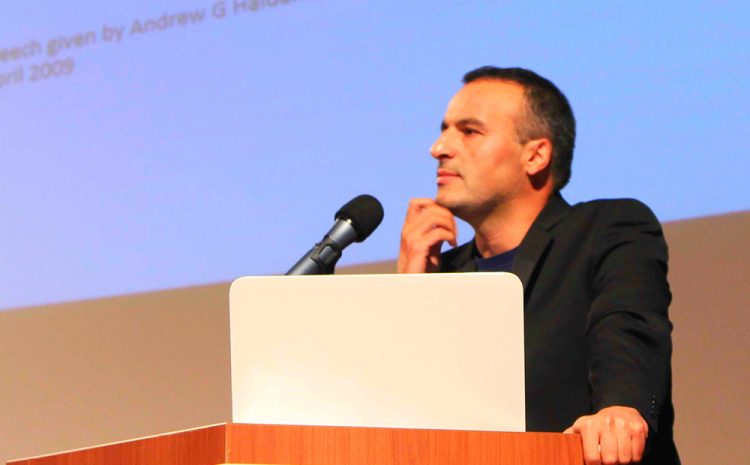
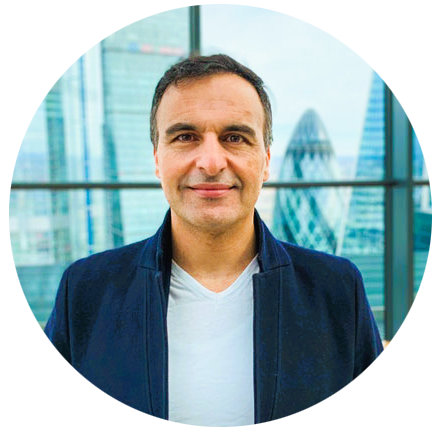
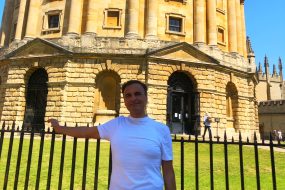
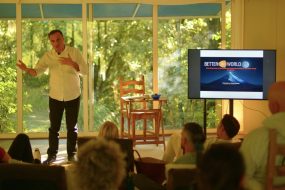
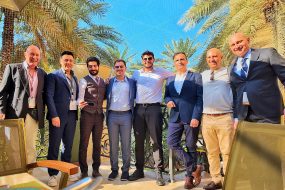

8 replies on “Together We Build a Better World: Systemic Change Toward a Regenerative Civilization. Case Studies from the Transformative Impact Summit 2025”
The Real Person!
Author 就是搞钱 acts as a real person and passed all tests against spambots. Anti-Spam by CleanTalk.
Love it
The Real Person!
Author Chris acts as a real person and passed all tests against spambots. Anti-Spam by CleanTalk.
Keep educating and inspiring others with posts like this.
The Real Person!
Author zia acts as a real person and passed all tests against spambots. Anti-Spam by CleanTalk.
I never thought about it that way before. Great insight!
The Real Person!
Author jalil acts as a real person and passed all tests against spambots. Anti-Spam by CleanTalk.
I really needed this today. Thank you for writing it.
The Real Person!
Author System Changer acts as a real person and passed all tests against spambots. Anti-Spam by CleanTalk.
Posts like this are why I keep coming back. It’s rare to find content that’s simple, practical, and not full of fluff.
The Real Person!
Author Hani acts as a real person and passed all tests against spambots. Anti-Spam by CleanTalk.
Very useful tips in Impact Industry
The Real Person!
Author Katy acts as a real person and passed all tests against spambots. Anti-Spam by CleanTalk.
Very Insightful thanks
The Real Person!
Author Aref acts as a real person and passed all tests against spambots. Anti-Spam by CleanTalk.
Your breakdown of the topic is so well thought out.